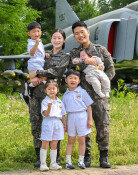Report: Korean Women Are Moving On Up
The womens economic participation rate in Korea exceeded 50 percent for the first time, which is attributable to the rise in the number of women with higher education and the prolonged economic slowdown.
It is increasingly common that women who have divorced at least once tie the knot with man who had never married before. Marriage rates between once divorced women and never married men was more than two percentage points higher than marriage rates between once divorced men and never married women.
All these can be found in a report titled Korean womens lives measured through statistics, which was released by the Korea National Statistical Office on July 2.
One out of Two Korean Women Participate in Economic Activities-
Last year, among women aged 15 or over, the proportion of those who were employed and those who had intentions to get jobs stood at 50.1 percent, exceeding 50 percent for the first time.
Womens economic participation rates have been on a steady rise: it was 37.2 percent in 1965 when the survey was first conducted and surpassed the 40 percent mark for the first time in 1973.
On the contrary, mens economic participation rate last year was 74.6 percent, which is lower than 76.4 percent of 10 years ago.
The National Statistical Office analyzed that there has been a significant increase in the number of women who advance into professional careers.
The proportion of women professors was 19.2 percent last year, 1.4 percentage points higher than in 1995. The proportion of female doctors rose from 11.4 percent to 13.2 percent over the same period.
Last year, the number of women who passed the Foreign Service Examination in Korea exceeded the number of men who passed the exam. Four out of 10 who passed the National Qualifying Exam for Senior Government Officials were women. Three out of 10 successful applicants of the National Bar Exam were women.
The number of women who secured their seats in local assemblies through the May 31 local elections was 525, accounting for 14.5 percent of the whole local assembly members, a significant increase over 3.4 percent of 2002.
The rise of womens status in the Korean society is largely due to the significant increase in the number of women who have gotten higher education.
In 1995, one out of two female high-school graduates advanced to colleges. However, last year, eight out of 10 female high-school graduates entered colleges.
Jo Ok-ra, an anthropology professor at Sogang University, said, As the birth rate is declining, people are educating their children equally eagerly regardless of their gender. As a result, more and more women are advancing into professional careers.
Marriages between once divorced women and never married men
6.4 percent of marriages last year were between men who marry for the first time and women who had tied the knot before.
Marriages between once divorced women and never married men represented only 2.3 percent of the entire marriages in 1990. However, that proportion increased to 3.5 percent in 1995, reached 4.9 percent in 2000, and exceeded 6 percent last year, as more and more people, especially young people, dont view a divorce of women as a big black mark.
On the contrary, the marriage rate between once divorced men and never married women, which stood at 3.6 percent in 1990, dropped to 3.5 percent in 1995 and increased to 4.1 percent in 2005, hovering below the marriage rate between once divorced women and never married men.
This seems to be reflecting that professionally competent women can marry like-minded first timers even after divorce.
The average age at which women marry was 27.7 last year, which is 2.9 years older than in 1990, and shows that women are delaying marriages because of burdens of work and child nurturing.
Thus, the number of births that a woman gives during her child-bearing ages (ages 15 to 49) was 1.08 last year, decreasing by 0.08 over 1.16 of 2004.
The Quality of Overall Womens Employment Is Still Low
The proportion of regular female workers to women who landed jobs last year was 25.6 percent. This is way below the proportion of male regular workers (41.1 percent) to the entire male workers and shows that despite the dramatic rise in the number of women with professional careers, the quality of employment for overall women is not so high.
Four out of 10 female workers were employed on a temporary or a daily basis.
The average wage level of women was also lower than that of men. The average wage of women in workplaces with at least 10 workers was 62.6 percent of that of men.
Last year, in an average double-income household, a male head of the family brought home 1.64 million won a month from his workplace, while his female spouse earned 920,000 won monthly.
legman@donga.com







